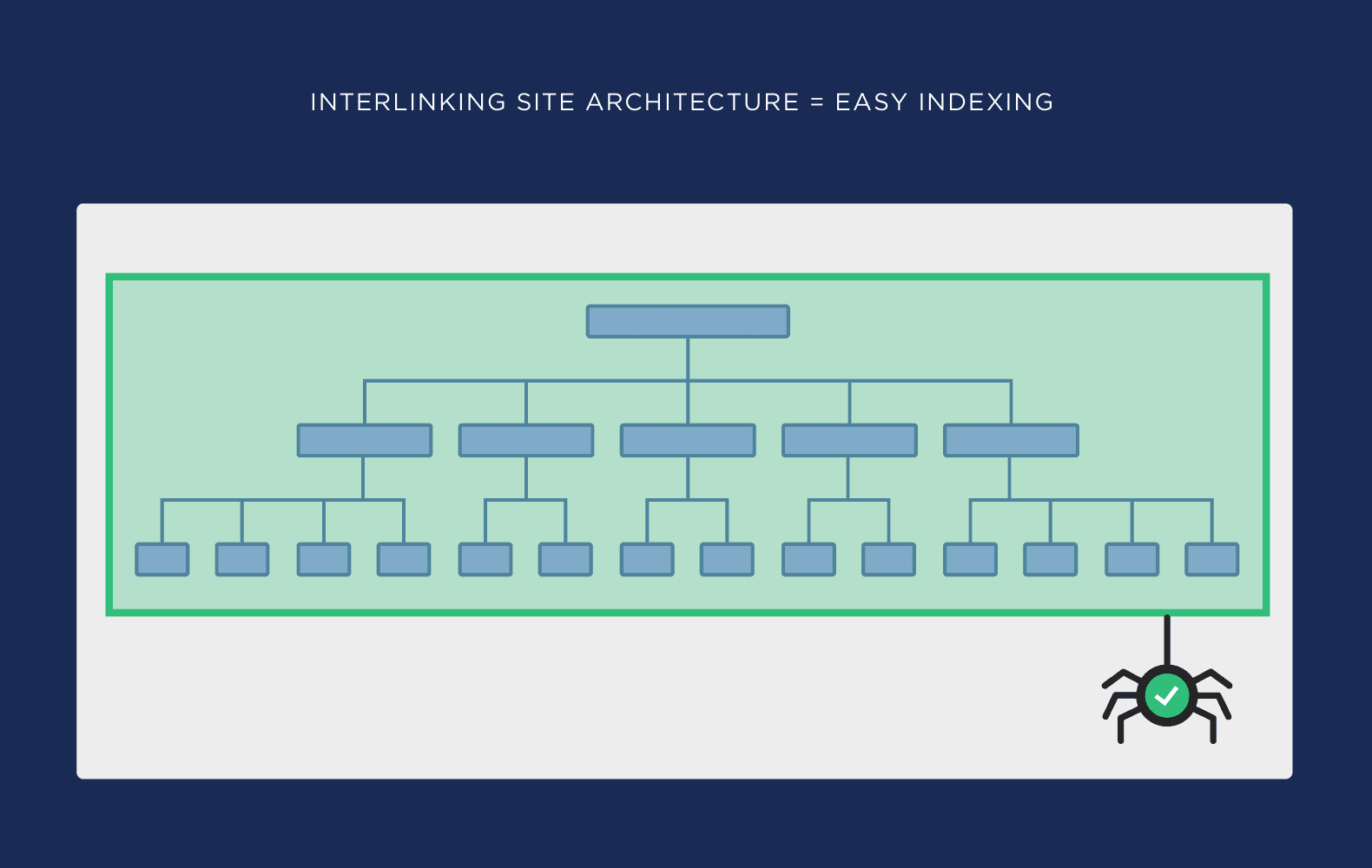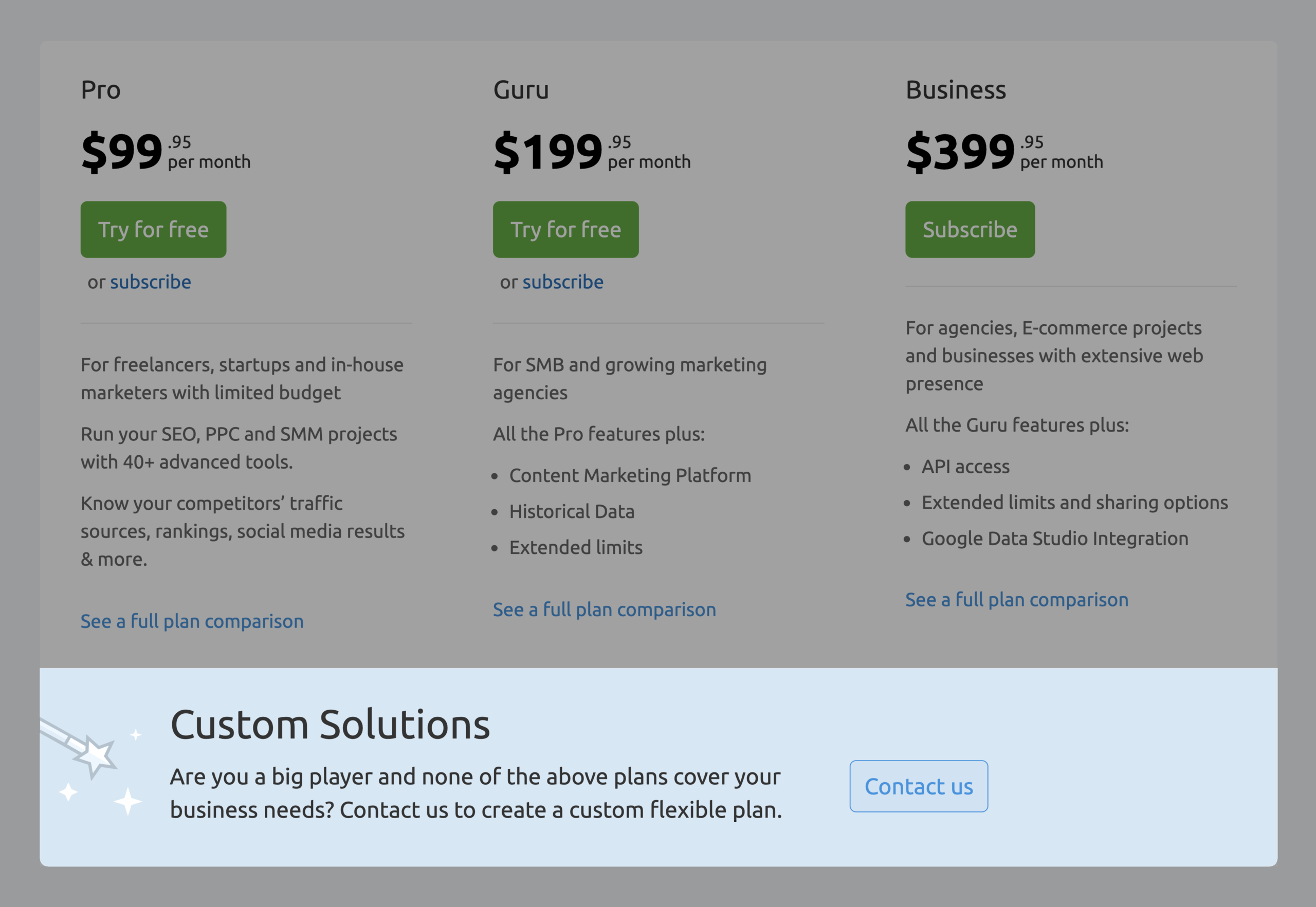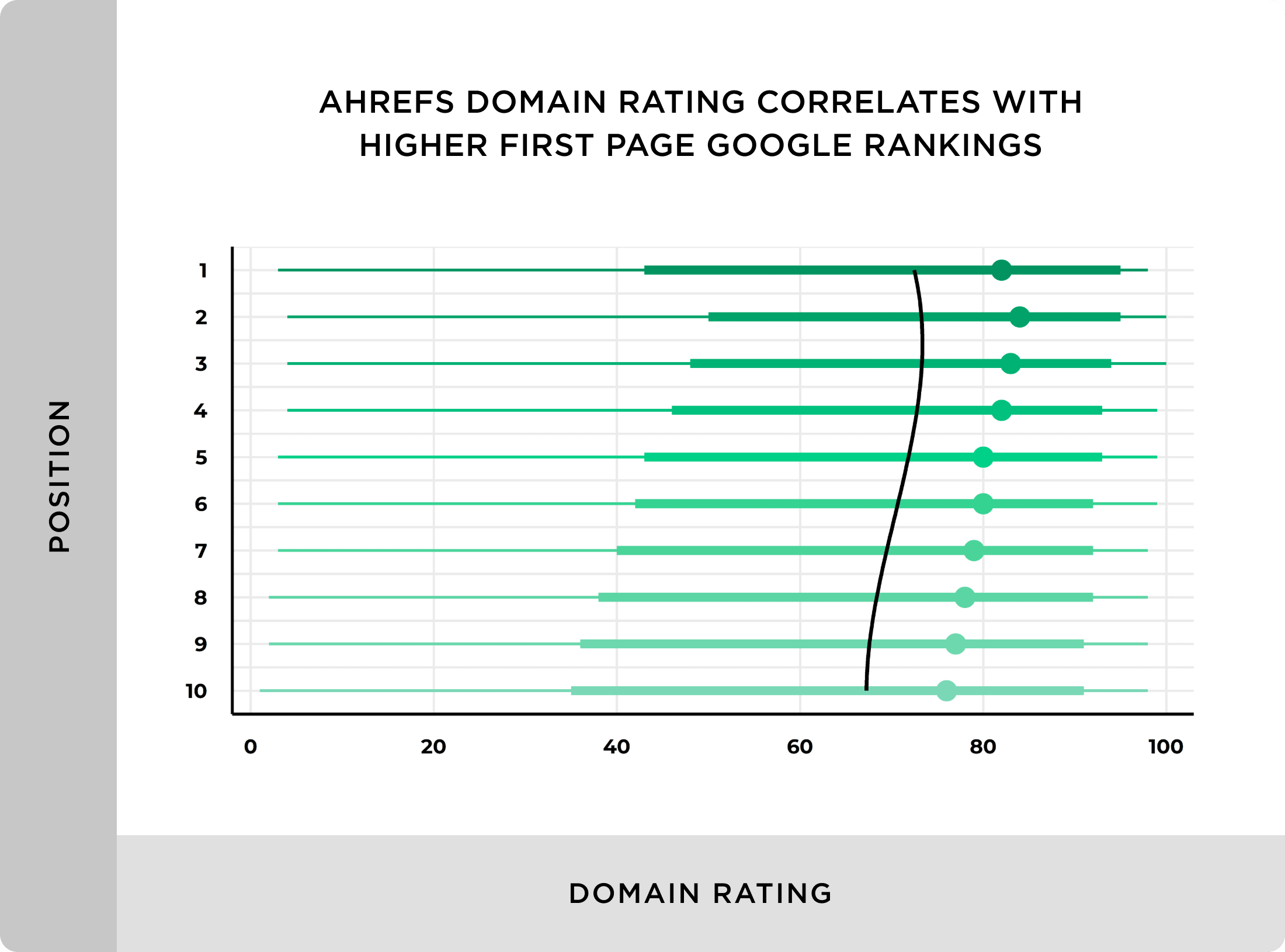What Is Enterprise SEO?
Enterprise SEO is the practice of improving search engine rankings for a large, enterprise company. Common enterprise-level SEO approaches include scaling content, ongoing technical SEO management, and automation.
Here are a few examples of the types of sites that might need enterprise-level SEO:
- Fortune 500 company
- Large ecommerce site with 10k+ pages
- Business with multiple locations
- Enterprise business with several websites
For example, take a look at a site like GitHub:

GitHub has 80 million pages indexed in Google.

Most traditional SEO approaches aren’t going to work nearly as well on a site like that. And even many traditional SEO best practices need to be adapted for an enterprise site with millions of pages.
Free SEO Agency Finder – Use our free service to find an agency or consultant that will actually deliver ecommerce SEO results.
How is Enterprise SEO Different Than “Normal” SEO?
Here are some of the major differences between enterprise SEO and traditional SEO:
Scaling
The biggest difference between SEO for enterprise sites and “normal” sites is scale.
It’s one thing to optimize a few pages on a small site. But when you’re dealing with a site that has thousands of pages, you need to scale everything you do. Otherwise, it’s probably not going to make a significant difference in the site’s organic traffic.
For example, internal linking is an important SEO best practice.
On a small site, internally linking from a handful of pages can make a noticeable dent in your rankings.

But a few internal links aren’t going to make a significant impact on a massive site like Amazon. We’re talking about millions of pages. For internal linking to work on a site like that, you need to scale things up.
That might include setting up an SEO-friendly site structure that automatically generates internal links between different areas of the site.

Or you may need to create a small script that automatically adds internal links to important pages.
Either way, it’s unlikely that you’ll be able to scale internal linking on an enterprise-level site manually.
Content production is another element of SEO that enterprise sites often need to scale.
If we’re talking about an ecommerce site, that usually means writing unique content for each product and category page.
If it’s a content site, then this usually includes assembling an editorial staff. And a team to optimize each page.
If the site has lots of user-generated content (UGC), then scaling content comes in the form of moderation and community-building.
For example, take a look at Backlinko. Backlinko is far from an enterprise-level site.
But we’ve had to assemble an entire content team just to scale content from 1 post/month to 10+ posts/month.
So yeah, a 4x increase took an entirely new process. And several new hires (including a project manager).
An enterprise website can sometimes need to 10x or even 100x their content output. That type of scale sometimes means that the business needs to create an entire department around content marketing. And set up systems and software to make sure they churn out high-quality content on a regular basis.
The bottom line here is this: most SEO approaches will technically “work” on an enterprise-level site. But for those approaches to have a noticeable impact on rankings, they need to be scaled up. Big time.
Different SEO Tools
Enterprise sites require enterprise tools.
(Or at least higher-level plans.)
In fact, there are even dedicated enterprise SEO platforms:

Depending on the enterprise site you’re working with, you might be able to use a “normal” SEO tool. And just go to a higher plan.
But many SEO platforms (like Semrush) offer a custom plan for enterprise clients.

You can also apply for early access to the new Semrush Enterprise platform.
Team Buy-In
Making a change (even a small one) on an enterprise site isn’t always easy to do.
That’s because an enterprise-level site usually has multiple people (and departments) all working on the site.
For example, let’s say that you’re a marketing agency working with an enterprise SEO client. And you notice that a certain set of pages on that site have multiple H1 tags.
As you know, you only want one H1 tag per page. It’s one of those things that’s not going to kill the site’s on-page SEO. But it’s a smart thing to fix.
So you send an email to a developer that works on the site: “Hey Mark, I noticed that your category pages have multiple H1 tags. Can you fix that for me? Thanks.”
Sometimes the developer will be able to make that fix.
But in many cases, a change like that requires approval from stakeholders in several different departments: development, design and SEO.
Not to mention the fact that many enterprise sites run on a custom CMS. Which means that this “simple” change can sometimes mess up multiple other parts of the site.
And that’s just changing an H1. Imagine if you want to create a script for internal linking. Or change the structure of the site to be more SEO-friendly. You’re usually taking weeks or months of meetings. Even then, there’s no guarantee that they’ll implement your suggestion.
Take it from someone that’s worked with several large organizations:
Enterprise SEO isn’t just about scaling up SEO. Or optimizing lots of pages.
For your SEO recommendations to actually go live, you usually need to get buy-in from different departments. And specific team members.
When you do, you’ll find that your recommendations get implemented promptly. And without a lot of friction.
The secret to getting buy-in for SEO changes?
Let people know what’s in it for them.
For example, let’s say that you want to flatten a site’s website architecture to make it more SEO-friendly.
That’s the kind of recommendation that most developers are going to instantly resist. Especially if it’s coming from an outside SEO company. Why? Because it adds work to their already-busy plate.
So if you want your recommendation to have a chance, you need to position it in a way that benefits them:
“Hey Mark, I know you agree that we should re-work the site’s structure to be flatter. I also realized that this change won’t just have an SEO benefit. It will also reduce the site’s page count by about 10%. Which should reduce server strain. And make managing the site easier”.
Obviously, you’ll probably need to do more selling than that. 🙂
But when it comes to getting enterprise SEO recommendations implemented, this is the general approach you want to take.
More Pages
As we mentioned earlier, “lots of pages” is one of the defining features of enterprise sites.
This isn’t necessarily a bad thing. If the site has a high domain authority. And publishes unique, high-quality content. Then “lots of pages” can mean “lots of first page rankings”.
That said: a site with 10k, 100k or even 1M+ pages can lead to technical SEO issues.
Namely: duplicate content.
Sometimes this duplicate content comes in the form of carbon copies of existing pages. In other words: your site has a bunch of pages with the exact same text.

This is fairly common on ecommerce sites. Sometimes an ecommerce CMS (like Shopify) will automatically generate product or category pages. And the content on each one is exactly the same.
(In that case, you’d probably want to use the canonical tag.)
But duplicate content can also be when you have pages on your site with similar content.

This is common with services pages that serve several different geographic areas. Or franchise businesses.
For example, you might have a service page optimized around the keyword: “catering Las Vegas”. And another optimized around “catering Boise”.
It’s going to be tough to write 100% unique content for those two pages. But it’s important to do if you want to avoid duplicate content issues.
Another potential issue that crops up with large enterprise sites is page bloat.
Page bloat is where your site has lots of pages that basically shouldn’t be there. Maybe these are old product pages. Or company announcements that are no longer relevant. Or search result pages that are getting indexed accidentally.
Either way, it’s important to stay on top of potential page bloat issues. That’s because page bloat can hurt the rankings of pages that you WANT to rank. And eat up your site’s crawl budget (which can affect indexing of new pages).
Page bloat can affect a site of any size. But in my experience, it’s more common with enterprise sites.
Why?
Enterprise sites tend to be big to begin with. So it’s easy for a bunch of low-quality pages to fly under the radar.
Second, you have lots of people and departments contributing content to the site. Many of those folks may not consider the fact that they’re contributing to page bloat issues (or even know what page bloat is).
Plus, no one in an enterprise company is usually “in charge” of keeping an eye on page bloat. Sometimes it falls on the dev team. Other times it’s the SEO person. But it’s somewhat rare for someone to keep tabs on potential page bloat issues.
Keyword Research and Selection
One of the great things about working with enterprise sites is that they can often target competitive keywords.
That’s because many enterprise sites have high domain authority. Simply by being a big brand.
For example, Booking.com does barely any content marketing. Despite that, their domain has 1.7 billion backlinks from 374k domains.

And if they ever wanted to go all-in with content marketing, they’d have a HUGE head start over their smaller competitors.
That’s because, all things being equal, sites with a high domain authority will rank above those with lower domain authority. That’s likely because Google’s algorithm favors sites with a high number of backlinks pointing to it.
In fact, our recent Google ranking factors analysis found that sites with a high domain authority had an edge in Google’s search results.

That’s not to say that enterprise sites can’t target long-tail keywords.
But unlike most smaller sites, they can ALSO target highly-competitive head terms too.
Unique Backlink Opportunities
Enterprise sites can tap into the same set of link building strategies that any website can.
But they have a few opportunities for building backlinks that many sites don’t.
For example, enterprise sites can often build links at scale from unlinked brand mentions.
Unlinked brand mentions are just like they sound: they’re when another site mentions a brand… without linking.
Here’s an example:

A popular (and effective) link building strategy is to reach out to the people that mentioned the brand without linking. And ask them to add a link.
Because the person already mentioned your brand, they’re much more likely to add a link. After all, they mentioned your brand for a reason. So it’s not a hard sell to go in and add a quick link.
Smaller sites may get 5-10 of these brand mentions per month. But a big brand enterprise site? They can sometimes get 500+ unlinked mentions every month.
Each of those mentions is a potential backlink.
Marketing Teams
Most SMBs have a dedicated digital marketing team. That team usually handles the gamut of marketing tasks: search engine optimization, social media, content, conversion rate optimization, email marketing, and PPC.
But enterprise sites are usually structured a little bit differently.
Instead of a single team, most enterprise-level companies have several different marketing departments. Each with their own in-house team.
When it comes to enterprise SEO, this approach has its pros and cons.
That’s because SEO tends to “touch” several different areas of digital marketing.
And if SEO is completely siloed from the rest of the marketing departments, it’s going to hurt that site’s ability to rank.
For example, let’s say that the SEO team wants to rank for a specific keyword in Google’s organic search results. For that to happen, the SEO team will need to coordinate with several different departments: content, development, social media and design.
If those departments all work together well, that content can be written, published and promoted in a week. If not, it can take months for the content to actually go live.
So yeah, it’s obviously smart to have marketing departments that specialize in different areas.
This is why most enterprise sites have this structure. And if they work together like a well-oiled machine, it can help a site’s enterprise SEO strategy get implemented fast and efficiently.
How to Outsource Your Enterprise SEO Strategy
Outsourcing your enterprise SEO can be an effective way to leverage specialized expertise. Follow these steps to ensure a successful partnership:
- Assess Your Needs: Evaluate your current SEO capabilities and identify areas needing support. Enterprise SEO differs from traditional SEO in scale, tools, team buy-in, and unique challenges.
- Define Your Goals: Clarify your SEO objectives and leverage your site’s strengths, like high domain authority, to target competitive keywords.
- Choose the Right Partner: Look for agencies or consultants with enterprise-level experience, strategic processes, advanced tools, and cultural alignment. Request case studies and references.
- Establish Communication Protocols: Set clear communication channels and reporting cadences. Ensure the partner understands your organizational structure.
- Define Scope of Work: Develop a detailed project plan with deliverables, timelines, and responsibilities. Consider unique enterprise opportunities.
- Set Baselines and Benchmarks: Determine current performance baselines and set benchmarks to measure progress and ROI.
- Integrate with Internal Teams: Ensure seamless collaboration between the agency and your internal teams to break down silos.
- Set Expectations and KPIs: Define success with specific, measurable KPIs tied to your SEO objectives.
- Think Long-Term: View the engagement as an ongoing partnership with room for growth and evolution.
- Monitor, Optimize, and Scale: Conduct regular reviews, optimize based on learnings, and scale successful initiatives.
Outsourcing enterprise SEO requires finding a partner who understands the unique challenges and opportunities of large-scale sites.
By setting clear expectations, maintaining open communication, and continuously optimizing, you can achieve your enterprise SEO goals.
Learn More
Measuring SEO Results: Guide to making sure your SEO efforts are bringing in real, tangible results (in the form of metrics that matter: higher Google rankings, more organic traffic, and an increase in revenue).
Building an SEO Team: Learn how to structure an SEO team from scratch.
The Digital Marketing Templates Library: Collection of templates that enterprise SEO teams can use for content creation, optimizing content, promoting on social media, and more.
